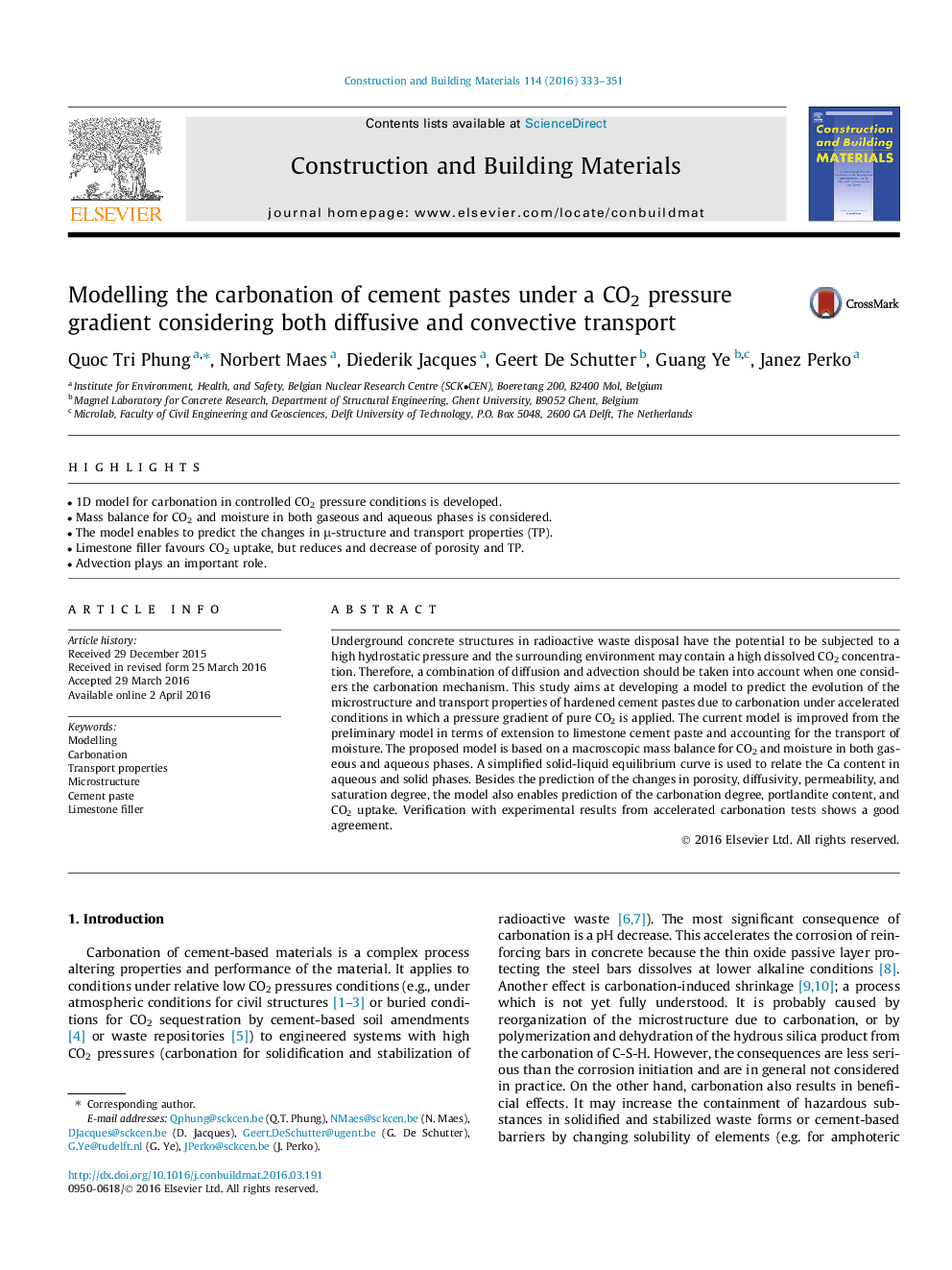| Article ID | Journal | Published Year | Pages | File Type |
|---|---|---|---|---|
| 255989 | Construction and Building Materials | 2016 | 19 Pages |
•1D model for carbonation in controlled CO2 pressure conditions is developed.•Mass balance for CO2 and moisture in both gaseous and aqueous phases is considered.•The model enables to predict the changes in μ-structure and transport properties (TP).•Limestone filler favours CO2 uptake, but reduces and decrease of porosity and TP.•Advection plays an important role.
Underground concrete structures in radioactive waste disposal have the potential to be subjected to a high hydrostatic pressure and the surrounding environment may contain a high dissolved CO2 concentration. Therefore, a combination of diffusion and advection should be taken into account when one considers the carbonation mechanism. This study aims at developing a model to predict the evolution of the microstructure and transport properties of hardened cement pastes due to carbonation under accelerated conditions in which a pressure gradient of pure CO2 is applied. The current model is improved from the preliminary model in terms of extension to limestone cement paste and accounting for the transport of moisture. The proposed model is based on a macroscopic mass balance for CO2 and moisture in both gaseous and aqueous phases. A simplified solid-liquid equilibrium curve is used to relate the Ca content in aqueous and solid phases. Besides the prediction of the changes in porosity, diffusivity, permeability, and saturation degree, the model also enables prediction of the carbonation degree, portlandite content, and CO2 uptake. Verification with experimental results from accelerated carbonation tests shows a good agreement.
